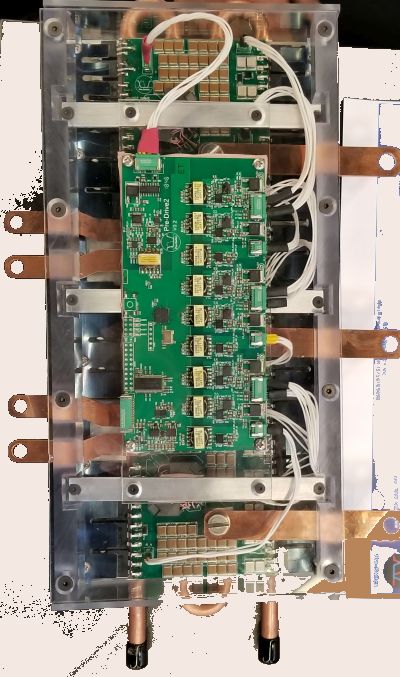A hard look at a soft-switching topology
The idea behind soft-switching a power semiconductor is to turn the device on only when the current through it is zero, avoiding a lot of the switching loss that arises otherwise. Pre-Switch Inc. implements a mode of soft  switching called forced resonance, where parameters such as the input voltage, load, transistor currents, etc., all get factored into the timing needed to force a resonance that offsets transistor voltages and currents and thus minimizing switching losses. This timing gets to be tricky, and Pre-Switch handles it via an FPGA that sets the timing, along with a special auxiliary resonant circuit. The technology has been used to super-efficiently switch 600-V IGBTs at more than 100 kHz and 900-V SiC transistors at 1 MHz. Pre-Switch currently sells its technology in the form of demo boards like the one visible here. Eventually, they think it might be possible to just sell the FPGA containing the swtiching algorithm, but not now: company officials say it is a bit tricky to get the auxiliary resonant circuit topology exactly right.
switching called forced resonance, where parameters such as the input voltage, load, transistor currents, etc., all get factored into the timing needed to force a resonance that offsets transistor voltages and currents and thus minimizing switching losses. This timing gets to be tricky, and Pre-Switch handles it via an FPGA that sets the timing, along with a special auxiliary resonant circuit. The technology has been used to super-efficiently switch 600-V IGBTs at more than 100 kHz and 900-V SiC transistors at 1 MHz. Pre-Switch currently sells its technology in the form of demo boards like the one visible here. Eventually, they think it might be possible to just sell the FPGA containing the swtiching algorithm, but not now: company officials say it is a bit tricky to get the auxiliary resonant circuit topology exactly right.
NEXT PAGE: Now that’s cool technology







Leave a Reply